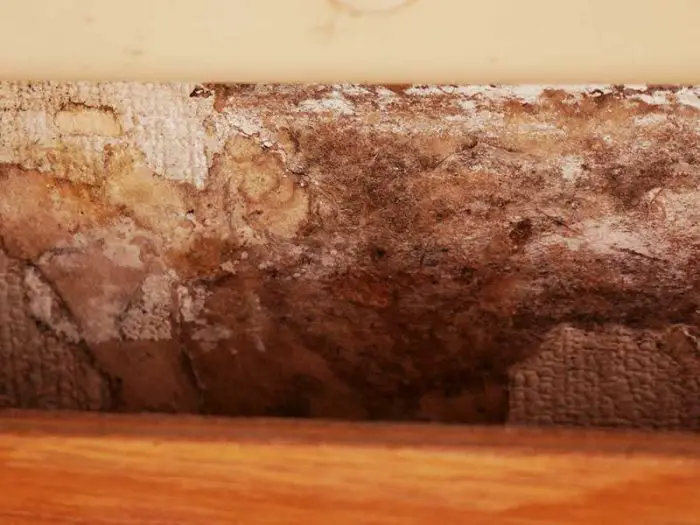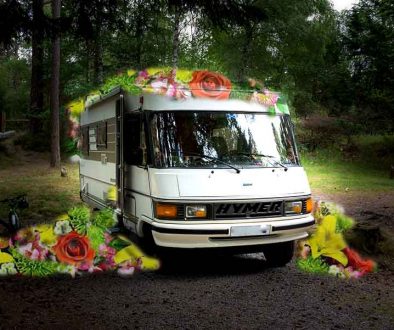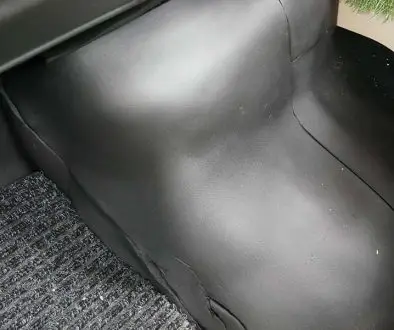Prevent Mould in a Motorhome
Mould can be a big problem in a Motorhome. You have to be vigilant and keep an eye out for any that appears, especially in the winter. Once it’s there it can be difficult to get rid of. Mould releases spores into the air and those spores are not good for you when you breathe them in. So it’s good to take care of any mould problem quickly.
To prevent Mould taking hold in your motorhome
- Keep it well ventilated.
- Make sure it is dry – always check for damp.
- Keep it clean and tidy.
- Keep it warm if you can.
- Always check for leaks.
Detecting if you have a Mould Problem
Unless the mould is growing in an obvious place and you can actually see it, how would you know you had a problem? Usually, the first sign that there is something growing in your Motorhome is the smell. Mould has a damp musty smell that you can’t seem to get rid of. As the problem grows so does the smell.
If you think you have a problem then it’s a good idea to have a look in areas where it is dull and damp. The toilet area would be the obvious place followed by the kitchen area. Check the taps for any leaks underneath and the waste pipes. A tiny water leak can supply a lot of mould with what it needs to survive. Check around vents and openings as condensation can help with the growth of mould. Any glass windows and the windscreen are great for condensation.
Mould loves humidity and warmth. A warm humid climate is perfect. This is why the winter can be a bit of a problem if you are spending time in your motorhome. The temperature difference between the inside and outside causes condensation and outdoor clothing is usually damp – such as coats, jackets and shoes.
What we have found is the shower room/toilet (ours is all in one) is a great place to hang damp jackets or put our wet shoes into. We can then open the air vent and let out the moisture. On colder days the heating will be on and this will help dry off the gear and keep the moist air separate from the main living space.
At our windscreen condensation had rotted the carpeted shelf and mould was rife in between the shelf and the carpet. We binned that carpet and replaced the plywood shelf.
We also had some mould under the sink created by a tiny leak in the waste. We sorted the leak and cleaned the area thoroughly. We used bleach for this as the mould was in the cupboard and was a substantial amount that was potent on the nostrils. Seems to be gone now.
How to Get rid of mould
When you find mould, how do you get rid of it? You can use bleach but if it on soft furnishings or clothing that’s not a good idea. Even if it’s on the walls or woodwork, you may want to test an area before you go crazy with the bleach. Apparently, white vinegar is more effective at killing the mould off but I didn’t want to risk the potent smell in the motorhome.
We tend to use bleach on areas where there is a real problem, always test the area first as you don’t want to damage anything. A less toxic option we have found is hydrogen peroxide, it works very well at around a 3% strength. Hydrogen peroxide (the same stuff that makes your hair blond – although don’t spray it on your head!) can be bought on the internet quite cheaply and is less damaging to both you and the environment than bleach (smells a lot better than vinegar). Remember to follow the instructions for any chemical you are using.
What you can do is spray on some bleach or hydrogen peroxide and leave it for a while, don’t let it dry but you can leave for about 10 minutes then wipe up. Any staining tends to need a good scrubbing to get that off. If the staining is really bad to the point of damage you could try some more bleach to see if the staining will go.
Once you get rid of the mould your motorhome should be smelling of roses – well, maybe bleach, peroxide doesn’t smell which is the good thing about it. You must find out what caused the mould in the first place. Check for damp in any of the places where the mould was found. Check what is causing any damp – leak?condensation? Whatever it is you have to take care of it.
Once you know what’s causing the damp you can then take care of it.
Ventilation
One of the main causes of mould growth is the lack of ventilation. Not really a problem in the summer when all the windows and doors are open and it’s still 26 degrees Celcius inside. But when the temperature starts getting lower and it 10 degrees Celsius outside, more typical for Scotland, then ventilation becomes more difficult. The more ventilation you have the colder your motorhome will be. You didn’t buy a motorhome so you could be cold. You want to be tucked up all nice and cosy so you shut off the vents, close the doors and windows. This will keep you warm but very quickly you will start to have condensation especially on the windscreen and side windows. The Hymer has double glazing (even on our 27-year-old example!) so condensation is not a problem in the habitation area windows.
While cooking it’s good to open a window or hatch just to ventilate the area. Some motorhomes will have an extractor fitted and this will help remove some damp air. Just having the gas cooker on creates moisture from the burning of the gas itself so ventilation is very important when cooking especially when the weather is bad and you are shut up in the motorhome.
Keep it dry
Mould loves damp so the drier you can keep your motorhome the better. This is helped by making sure that hatches and windows are not leaking. You can purchase a cheap damp meter and test around the windows, hatches and vents. The cheap damp meters are not terribly accurate but they will give you an idea or a warning if there is a problem. Check around any hole in your motorhome, that is vents windows and hatches. These are the areas most likely to have problems.
If you find that there is a problem you have to deal with it urgently. We found one of the windows to be leaking and had to take it off and reseal it. Because of the vans age, I would imagine that the rest of the windows will not be far behind as all the seals are the same age and I can see that some have been repaired in the past with silicone.
If you don’t keep it dry then mould will not be high up on the priority list, it will be rot you are dealing with and rot trumps mould.
Another cause of dampness is cooking and boiling the kettle. If like us the kettle never appears to be off you may want to think about getting a flask with the pump action so you just have to boil the kettle once and for the rest of the day you have piping hot water. This helps to reduce the amount of stem in the main cabin and will save you money on gas.
When cooking with pots keep the lids on. This will also keep down the moisture levels and cut your gas bill.
Try not to dry laundry inside the motorhome. This can be difficult when you have small children but if you must dry things in the bathroom, this works best for us.
Keep it warm
Keeping your motorhome warm when it’s cold helps to keep condensation down and stops the place feeling damp. Cold air can’t hold as much moisture as warm air so as the temperature drops moisture comes out of the air giving everything a damp feeling. The heating in motorhomes tends to be very good.
Our ancient heating system is blown air heating so there are hot air ducts that run through the van and follow the water pipes and go round the water tanks to prevent freezing. Also, all the lower lockers are heated when the heating is on. This Means the camper is nice and cosy with very few if any, cold spots. So, if it’s chilly use the heater it will keep the whole motorhome warm as well as the living space.
In the winter you may find your clothing will go a bit mouldy in the lockers if they are not heated. Sometimes it’s good to leave them open so they can warm up to prevent condensation that eventually causes mould. Our upper lockers are nor heated, so we leave them open for a while and they are fine.
Keep it clean
If you leave piles of things lying around there is a good chance they can go mouldy. Keep things like laundry in a bag. Keep the place clean and vacuum or brush regularly. The less dirt and things there is lying around the less chance there is for mould to form. Also if your motorhome is tidy you are able to see dirt and deal with it as soon as possible.
For us, this is easier said than done as we are three adults and one child. That is four large pair of shoes at any time and usually we have van shoes such as slippers for using in the van to keep our feet warm. Shoes are a problem. It also means we have four outside jackets and if it has been raining we have four very damp jackets and four pairs of wet shoes. This quickly creates a damp environment so we keep damp things in the shower area with the vent open.
Check regularly for leaks and damp
Always keep your eyes open for leaks and damp, especially if you lay up your motorhome for the winter. Always check regularly. A motorhome is a large investment and repairing rot and damp can be very expensive if you don’t catch the problem quickly enough. Use the damp meter regularly (just be careful as it will put little holes in the decoration and you don’t want too many of those). Always check your windows, hatches and doors for any leaks.
Our experience of Mould so far.
We have been very lucky with regards to mould. The only times we have had mould is when we have had a problem with the plumbing or a water leak, which were dealt with promptly.
In conclusion
It’s quite simple. Keep you motorhome as dry as possible and you won’t have a mould problem. Your Motorhome should not be mouldy. If it is the mould is indicative of a problem that requires your attention. If you deal with the problem quickly you will reduce the possibility of mould getting a grip in your motorhome.




